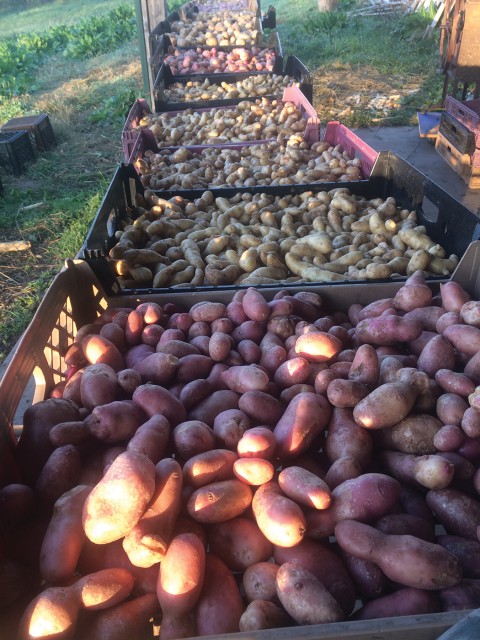The wonder of homegrown potatoes
Underneath layers of mulch, the German Butterball and Rose Gold flourish.

There is no job that is hotter, scratchier, dustier, dirtier, or more dreaded by newcomers to my brother Henry’s organic vegetable farm than mulching. One reason is that it always takes place on the hottest, muggiest days of the year. Not out of perversity, but out of necessity.
Potatoes, tomatoes, peppers, and eggplants like warm soil, so we can’t mulch until the hot summer weather has settled in. In addition to the ground being warm enough, it must be moist enough. So we need to wait to begin our mulching marathon until a day or two after a good thunderstorm, when the leaves are dry (so we won’t inadvertently spread plant diseases) but the soil moist.
When all those conditions are met, and the potato plants are 12 to 18 inches tall, we begin mulching. First, we load the hayrack with square bales that have been stored in the barn, stacking them five or six layers high and positioning each layer crosswise from the previous one so bales don’t topple off as the truck pulls the loaded rack over rough ground. Then each person grabs a 55-pound bale in each hand, and we lug them down a 200-foot row of potatoes, dropping one in the aisle every 15 feet or so, and then returning to the rack to get two more.





